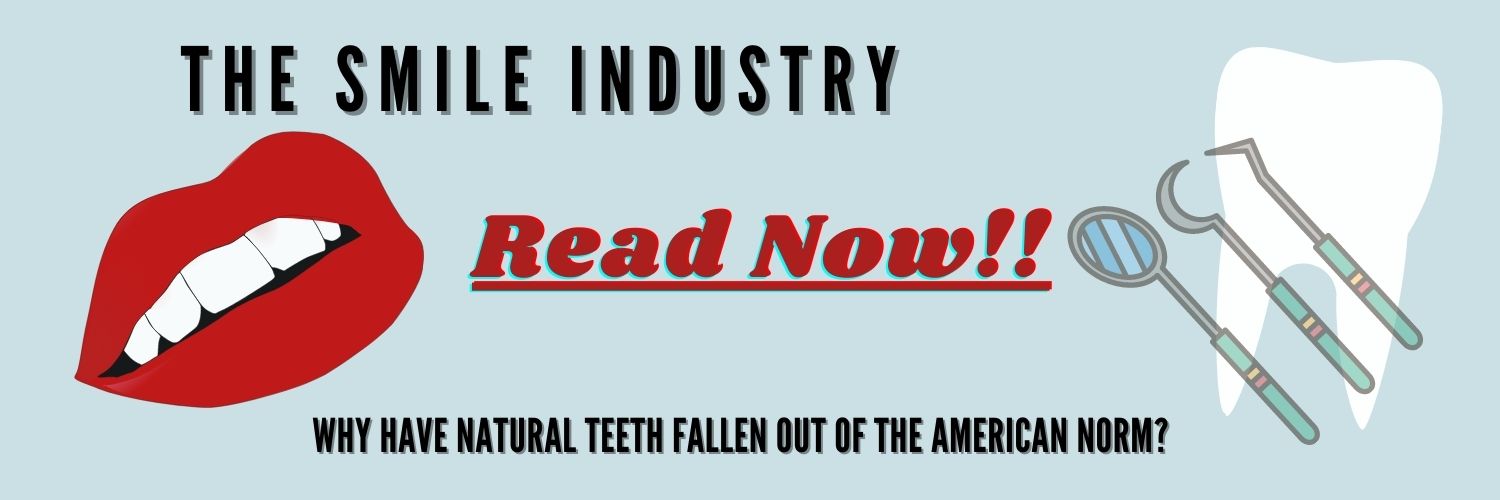Not-so-perfect smiles
How American pop culture influenced dental standards.
October 10, 2021
The 1950s in the USA were made in the shade. Following the end of the bloodiest war in recent history, American pop culture emerged as a force to be reckoned with. Fast cars burned rubber across big screens, hairdos with sticky hair grease took the country by storm, and actors with pearly white smiles and perfect rows of teeth made headlines. The “Colgate Smile”, slang for the “perfect” teeth captured in the media, has dominated American pop culture since the 1940s and has appeared on the faces of many of America’s prominent people. However, this expectation overrides perfectly beautiful, natural teeth that do not fit this standard. The media should break the cycle and become more representative of smiles that do not fall into the current beauty standard.
To start, the teeth of American media are not a beauty standard worldwide. In fact, many cultures lean the other way when it comes down to having an aligned or a natural smile. For example, in Japan, crooked and slightly protruding teeth are favored for the most part over teeth that have been tampered with. The Japanese word yaeba, translating to “double tooth”, is the preferred style of teeth in Japan. This smile has a fang-like appearance, mostly in the upper canines, and they are considered youthful and a sign of natural beauty. Similarly, in Britain, dentists say that their customers enjoy a more natural look over the industrial-white, straight smiles enjoyed by many Americans. In turn, people who don’t need to fix alignment problems for safety and comfort should stay away from cosmetic dentistry.

Next, straightened teeth tend to move as people age if retainers are not worn properly, resulting in an awful return to the start. 80% of America’s teenagers receive this treatment, and it’s not very probable that all of them are wearing their retainers as recommended. Activities like speaking, eating, and even things like sneezing and smiling create pressure on your teeth, and over time this affects the position of your teeth. The retainer is built to combat this pressure on your teeth and keep them straight, yet the lack of wear allows teeth to slowly return to their old shape. On average, the cost of a straightening procedure with any aligner in Houston ranges between $2,000 and $8,000. In this case, the hard work would be all for nothing, leaving you with nothing but a frown and a dent in your bank account.
People may argue that straight teeth could help more people than it hurts, fixing crooked teeth that would cause pain or discomfort. However, less than half of all Americans face problems with teeth functionality that require aligners to fix. This means much of the population getting aligners are doing this for the aesthetic of straight teeth, not to remedy actual issues. This statistic is brutal, displaying just how well the marketing of “perfect” teeth worked on the American people, and how this market turned people away from appreciating what they have.

There isn’t an easy way to reset a standard that society has set as a whole, especially if it has been accepted as the norm for about 70 years. However, a simple change in perspective could affect many people, leading to natural smiles receiving more media coverage and the respect that they deserve. A push for representation is dire. Petitions could be signed, driving large cosmetic corporations to become more inclusive of all smiles. Graphics could be created and posted giving insight on the issue and how acceptance of everyone could be achieved. The possibilities are endless.
So what is the problem with the way natural teeth look? They are just as unique to each of their wearers as the fingerprints on their fingers, and for this, they should be embraced for what they are. They perfectly represent people who wear them. The standard of the “Colgate Smile” has covered up individuality for too long, but today that must change.


